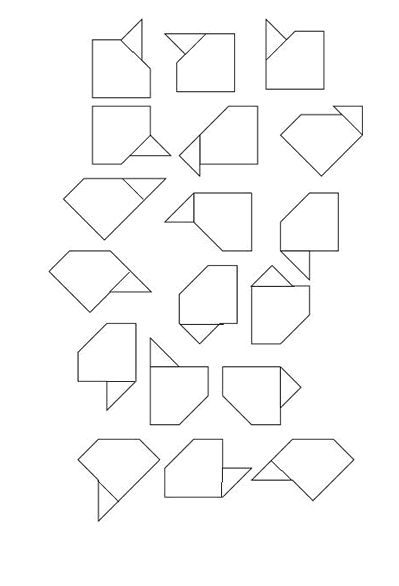Skip over navigation
Locate either the short side where the cut was made or three remaining right angles, then draw in the sides of the square, this will allow you to see where the triangle has been placed.


Or search by topic
Number and algebra
Geometry and measure
Probability and statistics
Working mathematically
Advanced mathematics
For younger learners
Rearrange the Square
Age 5 to 7
Challenge Level 





- Problem
- Getting Started
- Student Solutions
- Teachers' Resources
A pupil from Lauriston School said:
The best way to do this is to do it physically, always look
for the long side.
Louise suggests a different method:
Locate either the short side where the cut was made or three remaining right angles, then draw in the sides of the square, this will allow you to see where the triangle has been placed.
Sam from Godalming College submitted this solution which he says he did by sight:

Well done Sam and thank you everyone for writing in!
You may also like
Four Triangles Puzzle
Cut four triangles from a square as shown in the picture. How many different shapes can you make by fitting the four triangles back together?
A City of Towers
In this town, houses are built with one room for each person. There are some families of seven people living in the town. In how many different ways can they build their houses?

